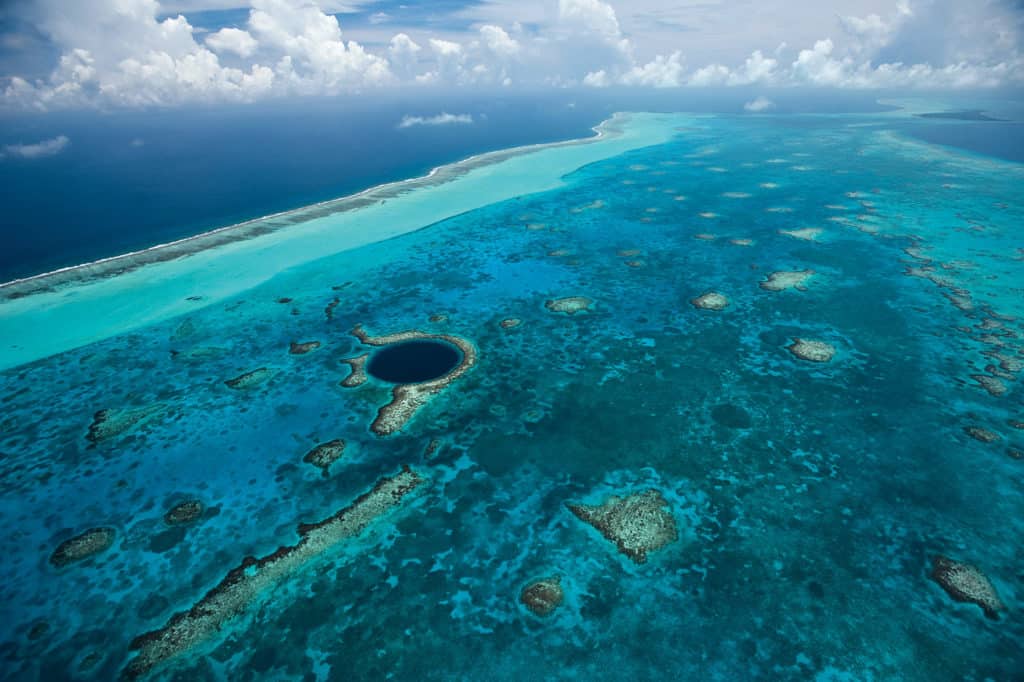
The Great Blue Hole is a giant marine sinkhole near the center of Lighthouse Reef, one of the three atolls of Belize. Visible from outer space, the blue hole is circular in shape and it’s 318 meters (984 ft) across and 125 meters (410 ft) deep.
Locally known as the Blue Hole in Belize, it is the country’s most famous attraction and every year it draws thousands of travelers from around the world for the sole purpose of diving it. Although the hole is incredibly deep, the great visibility underwater allows divers to easily see the cave formations and marine wildlife.
Along with Belize’s Barrier Reef, the Blue Hole is consistently ranked as one of the top dive sites in the world, yet, it notoriously disappoints many divers. This is because often divers come expecting colorful coral reef diving but instead get to dive a unique cave structure, which is more of a novelty to do.
Great Blue Hole tour

The Blue Hole dive is most often paired with a wall dive at Half Moon Caye. Both sites are a two hour boat ride from Ambergris Caye or Caye Caulker. The first dive is at the Blue Hole in the morning and the Half Moon Caye Wall dive is after lunch. The second dive is filled with dramatic walls, corals and colorful fishes.
In recent years, a scenic flyover tour has become another popular way to explore the Great Blue Hole. Yes, that’s right, flying over the Blue Hole is now a top thing to do while visiting Ambergris Caye or Caye Caulker (since it’s near these locations).
Things to consider
- Divers need at least an Open Water or Advanced Open Water diving certification for this dive.
- Divers must be able to maintain neutral buoyancy and breath control to enjoy the dive and in fairness to your dive buddy.
- I personally think it’s not worth going to the Blue Hole just to snorkel, instead you should do a flyover tour.


